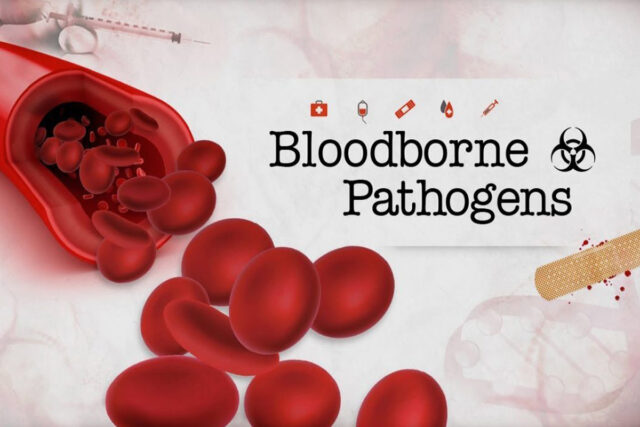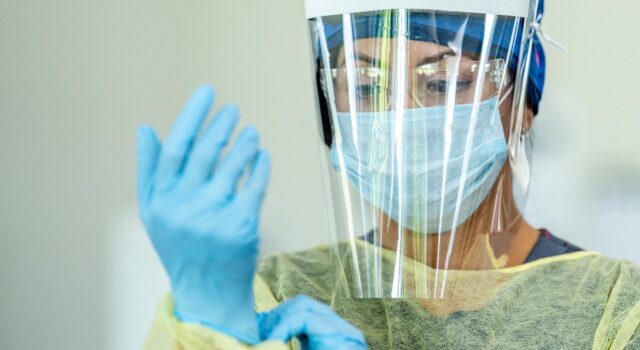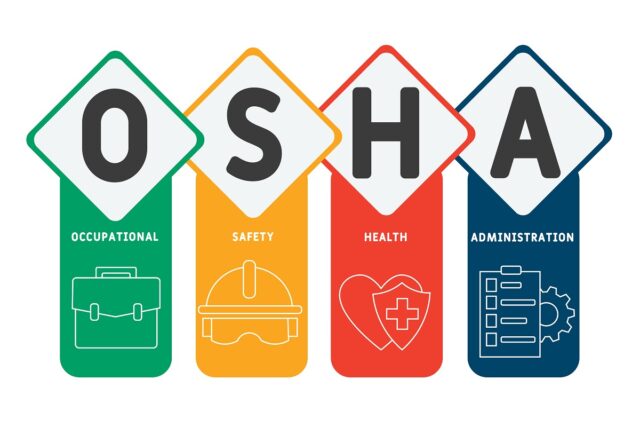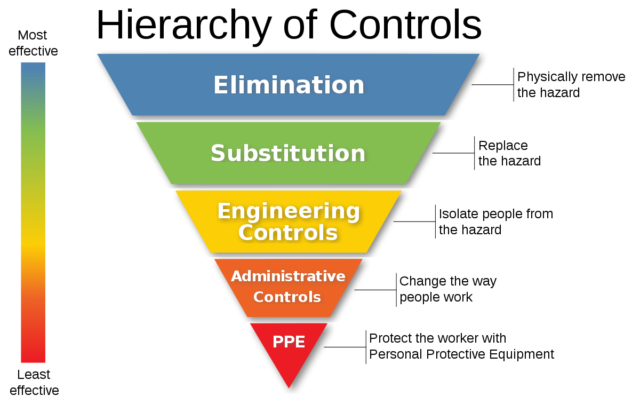
If you work as a nurse, physician, dentist, lab assistant, tattoo artist, or in suchlike professions, you’re likely to encounter bloodborne pathogens (BBP). Thus, you need to have the requisite knowledge to deal with them. Otherwise, you may contract dangerous diseases.
An excellent way to boost your BBP know-how is by undertaking a bloodborne pathogens course. By completing one and subsequently getting certified, you’ll help your career in the following ways:
High Chance Of Employment

Most employers in industries with a high risk of coming into contact with BBPs require you to have Bloodborne Pathogens certification before they can allow you to work with them. Thus, by enrolling in a BBP course and getting a certificate, you improve your employability. If you apply for a given position with someone else who isn’t certified, your chances of winning the vacant slot are high.
There are two main reasons why employers put this measure in place. First and foremost, they need the guarantee that you understand how to keep yourself safe while working in such risky environments. Secondly, they must comply with the Occupational Safety and Health Administration’s (OSHA) standards laid out by the local government. Failure to adhere to these standards may lead to the revocation of their operating license.
For these reasons, you may want to enroll in a BBP course as soon as possible. The good thing is that you can take online classes. This means that you don’t have to attend in-person classes if your schedule doesn’t allow it. If this interests you, visit here for more details on typical topics covered, course fees, and duration
Risk Avoidance

You don’t want to prematurely cut your career short by contracting and succumbing to lethal bloodborne diseases. If you don’t get treatment immediately, some of them may become life-threatening.
Here are some of the most common diseases you can get if you come into contact with an infected person’s blood:
- HIV (Human Immunodeficiency Virus): This primarily attacks your body’s immune system and eventually leads to AIDS (Acquired Immunodeficiency Syndrome). Note that there is, so far, no effective cure for this illness. Once you get it, you can only take measures to prolong your life.
- Hepatitis B: This is a life-threatening viral infection of the liver. You can get Hepatitis B by coming into contact with the blood and other body fluids of an infected person. It can also cause chronic infection and increase your risk of succumbing to cirrhosis and liver cancer. Fortunately, there are vaccines you can get to prevent infection. However, their effectiveness isn’t always 100%. Thus, you have to take the necessary precautions.
- Hepatitis C: Similar to Hepatitis B, this is an infection that inflames the liver and negatively affects its function. More than 50% of Hepatitis C victims develop a chronic, life-long infection. The disease also increases your risk of contracting liver disease and liver cancer. Worst, you may end up succumbing to it.
- Brucellosis: This is a bacterial infection characterized by fever, anorexia, sweats, malaise, headache, joint pain, fatigue, depression, and swelling of the heart and liver. The risk is especially high for people handling bacteria in laboratories, as well as slaughterhouse and meat-packing employees. Luckily, there are effective antibiotics for this disease. Death from brucellosis stands at below 2% of all cases.
- Syphilis: Although principally transmitted through sexual contact, you can also get syphilis when an open wound on your body comes into direct contact with a syphilitic sore. Common symptoms of this disease include sores spread throughout the body, fever, weight loss, inflamed lymph glands, hair loss, extreme fatigue, and muscle aches.
- Zika and West Nile Virus: These two diseases are primarily mosquito-borne. However, there’s evidence of their spread through blood transfusion. So, you may want to keep your guard up just in case you’re one of the few who get them through blood-to-blood contact.
Proficient Use Of PPEs

You’ll be surprised to learn that not many people understand the importance and proper use of personal protective equipment (PPE). A bloodborne pathogen course teaches you to use PPEs for protection against such diseases.
Here’s an outline of some of the protective gear you need throughout your career:
- Masks: Did you know that diseases like brucellosis can spread through inhalation of the causative bacteria? Also, other viruses, including coronavirus, can get into your body through the respiratory tract. That’s why you need to mask up whenever you’re handling patients with such contagious diseases. However, don’t just use any ad hoc mask. You want to wear the triple-layer or N-95 medical masks.
- Gloves: Your hands are another sensitive part of your body you should always watch. Generally, you touch everything with your hands, including the body fluids of patients. If you have no protection, you could expose yourself to deadly infections. Moreover, you may have bad habits, like touching your face or picking nails. By wearing gloves, you reduce the risk of contaminating your hands with disease-causing microorganisms and other germs.
- Gowns: Some work environments may be chancy regarding bloodborne pathogens. Thus, you may need to cover your whole body to prevent exposure to BBPs. Full-body coveralls provide the necessary barrier.
- Headgear: In some instances, you may also need to protect your eyes, nose, and mouth from the entry of germs. A face shield and a pair of goggles will do. In hazardous environments, you’ll also need head covers to shield your neck and hair from infection.
- Shoe covers: Finally, don’t ignore your feet as they can act as an entry point for pathogens.
A bloodborne pathogens certification helps you appreciate the importance of these gear. Hence, you’ll no longer show the carefree attitude that some workers portray. This way, you’ll always stay safe during every workday and survive in your job for a long time.
Awareness Of OSHA’s Bloodborne Pathogens Standards

The Occupational Safety and Health Administration (OSHA) develops regulations to protect workers against health hazards. Bloodborne pathogens are one of their main concerns. Every health-related business must adhere to OSHA provisions. Failing to do so may result in hefty fines.
If you’re in private practice, you may incur fines of up to USD$136,532 for every willful or repeated violation. That’s enough to throw you out of business and render you bankrupt. Thus, it’s in your best interest to familiarize yourself with the dictates of OSHA and how to implement them at work.
As mentioned earlier, they can, as well, revoke your operating license if you don’t have a bloodborne pathogens certification. Why risk all these penalties while you could get it right in the first place? Be wise. Get the training and certification to ensure your workplace meets the required standards.
OSHA Inspections

Time after time, OSHA conducts impromptu inspections on companies that operate in hazardous environments. They send highly-trained industrial hygienists to your workplace without prior notice. As such, they can easily catch you off-guard if you’re the kind who downplays government standards.
Strive to always be on the right side of the law. This way, your career progresses without serious hitches. Fortunately, OSHA allows you to request an inspection of your premises if you need to be sure whether or not you comply with their rules.
They usually come within 30 days from the time you file a request. Once at your workplace, the OSHA representatives do a walkaround of all parts of your workplace. Depending on how big your workplace is, the exercise may take just a few hours or several days or weeks.
Eventually, they’ll give you recommendations on how to improve your business premises for the sake of occupational health and safety.
Concepts Of Work Practice And Engineering Controls

Aside from PPEs, you need to understand the use of other devices designed to reduce the risk of infection. These products are what you call engineering controls. For instance, needles are a common means of transferring BBPs from a patient to the carrier. For safety purposes, manufacturers are now making needleless medical devices. Additionally, they ensure sharp objects have engineered sharp protections.
Aside from using engineering controls, you need to know how best to handle particular medical procedures. These strategies are known as work practice controls. Practical examples are as follows:
- Flushing your mucous membranes as soon as pathogens contaminate them.
- Recapping needles by using the one-handed scoop technique.
- Restraining from bending or breaking needles before disposal.
- Discarding needles in proper containers.
- Labeling containers with biohazard symbols to prevent unsuspecting workers from touching the contents.
- Not eating or drinking in hazardous environments.
- Transporting items contaminated with blood in puncture-resistant and leak-proof containers.
These are some of the things that BBP courses make you aware of. But it’s just the tip of the iceberg. You’ll get into details once you enroll in a training program. With such knowledge, you’re more likely to stay in your profession unscathed.
Bottom Line
If you work in hazardous environments, you may want to get a bloodborne pathogens certification for several reasons. First and foremost, it’s for your good. You’ll understand the repercussions of contracting bloodborne diseases so you’ll learn how to protect yourself. Second, the certification increases your chances of landing a job in hospitals, nursing homes, and suchlike industries.
Third, you’ll know how to comply with OSHA standards and avoid unnecessary fines due to violations of regulations. Fourth, you’ll appreciate the purpose of personal protective equipment and get the correct ones for your job.
Finally, you’ll master some work practice and engineering controls requisite for your profession. The ultimate goal is to survive in your potentially hazardous career without being a victim of deadly blood-to-blood infections.












